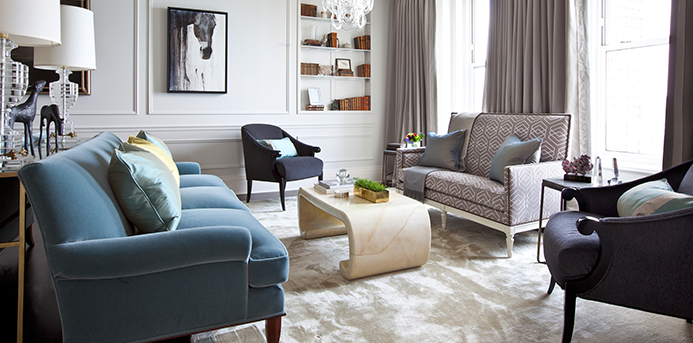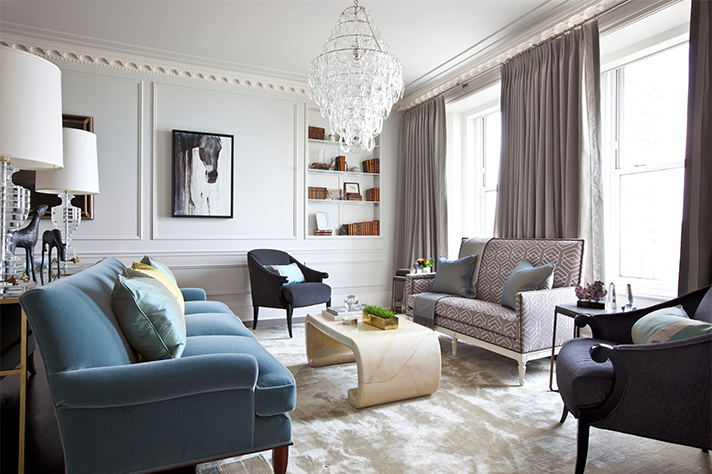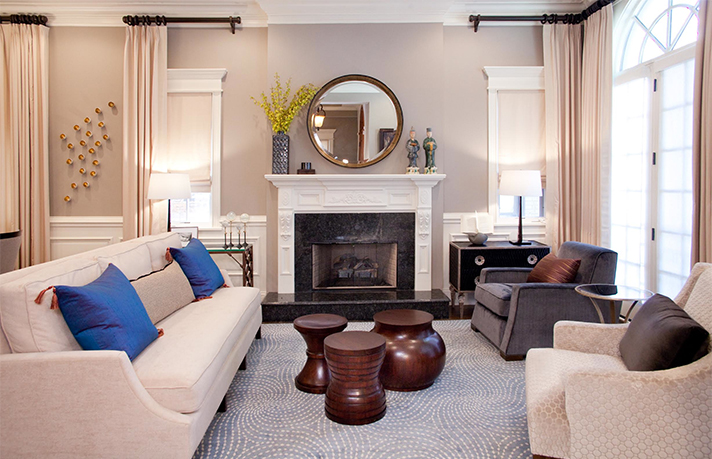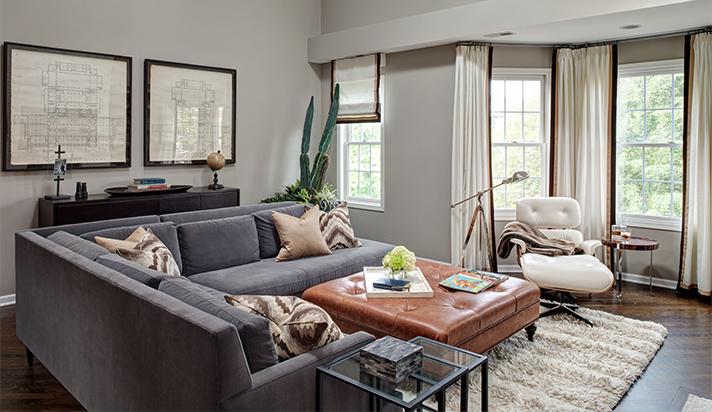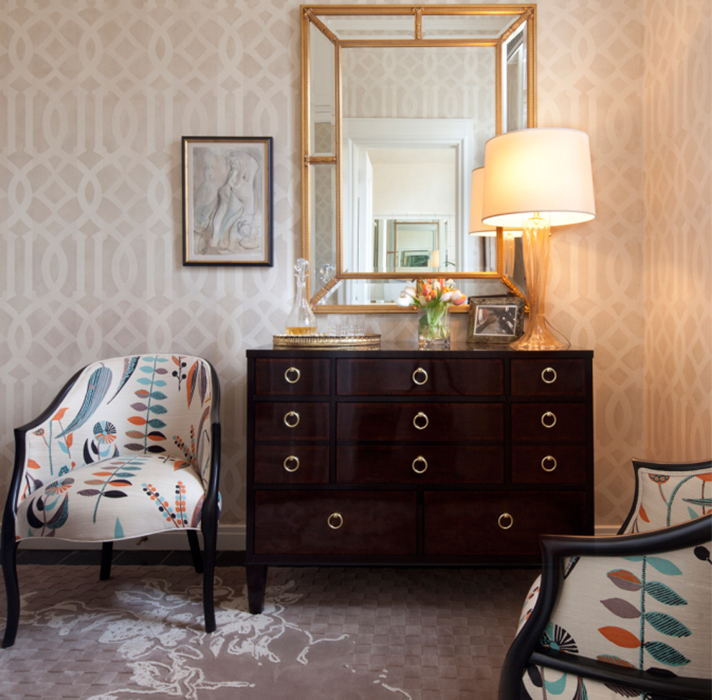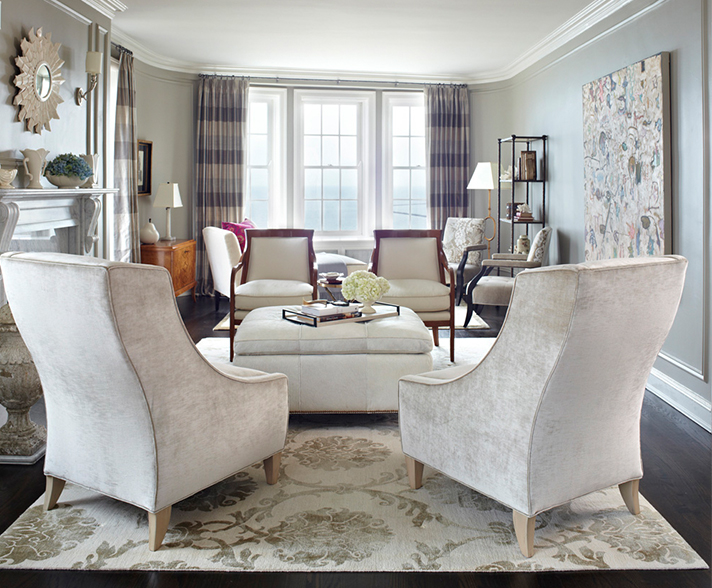Chicago designer Summer Thornton’s motto is, “No amazing room was ever created without taking a risk.” We couldn’t agree more. While we don’t advocate rebelling without a cause—after all, some guidelines can be helpful when you don’t have the benefit of an interior designer at your disposal—a little selective rule breaking can yield stunning results. Here, Thornton and six other intrepid designers tell us which rules were made to be broken, and how to do it with style.
Old-School Rule #1: Every room needs a rug
How to break it: If you’ve got gorgeous floors, don’t be afraid to let them shine! Designer Michael Del Piero says bare wooden floors can ground the other design elements in a room. She especially loves highlighting standout flooring like wide planks, hand-scraped walnut or natural limestone.
The result is elegant, spare and surprisingly dramatic.
Old-School Rule #2: Buy major pieces in neutral colors
How to break it: “I have no idea where the convention began that sofas should be neutral,” Thornton says. “At our firm we use dramatic patterns and colors…even in the core pieces of a room, because they create a statement about the owner that says they’re more interesting than beige.”
It might be scary to spring for that pink mohair sofa, but audacity pays off in myriad ways. Choosing a vibrant color for your main piece of furniture will actually limit your options when it comes to designing the room—which can be a good thing if you find yourself paralyzed by indecision. Plus a bold piece will give your room presence.
Old-School Rule #3: Every living room needs a coffee table
How to break it: Lake Forest designer Lisa Wolfe says to start by figuring out what function a table needs to serve in your room. Some rooms need a place to display books and objects, while some just need a perch for cocktails.
Once you know what you need, you can discard what you don’t. If you don’t need a large storage piece in the center of the room, don’t have one. Wolfe loves to swap out the cumbersome cocktail table for an arrangement of smaller pieces: “They meet the functional requirements but are also incredibly flexible,” she says. “And if you pull it off well, it looks artistically sculptural.”
Old-School Rule #4: Just one leather piece per room
How to break it: Leather is a practical material and lends depth and character to any environment, but a suite of leather furniture can give off a cheesy bachelor-pad vibe. The trick to avoiding this look is to mix leather pieces to keep it interesting, according to Chicago design team Cari Giannoulias and Melissa Lewis. Skip the matching altogether, and instead pair sleek modern leather with something vintage and patinaed.
“By incorporating two different feels, the leathers complement each other instead of fighting for the viewer’s attention,” Lewis says.
Old-School Rule #5: Avoid too many patterns in a small space
How to break it: When employed strategically, richly layered patterns can be symphonic and utterly luxurious in a small space. Beth Boyd of Highland Park’s Wiley Designs explains, “Blending different patterns together successfully…is largely about changing up the scale of the patterns as well as changing the patterns themselves.” She suggests mixing stripes with florals and geometric patterns in a variety of sizes.
“Color intensity is another element to consider,” Boyd says. “Select a palette with one or two deeper colors and the balance of the colors in softer hues.”
Old-School Rule #6: Living rooms must have sofas
How to break it: For many of us, this is not a just a design rule, but an unquestionable truth. Yet, there’s more than one way to sit and chat! Chicago designer Kim Scodro says a large sofa can weigh down a room. A grouping of chairs, on the other hand, creates an intimate atmosphere without forcing guests to sit in an awkward lineup, and affords you greater variety in your materials.
“…By using two sets of chairs, [you are] able to introduce different fabric and wood tones that a large sofa would not allow,” Scodro says.
